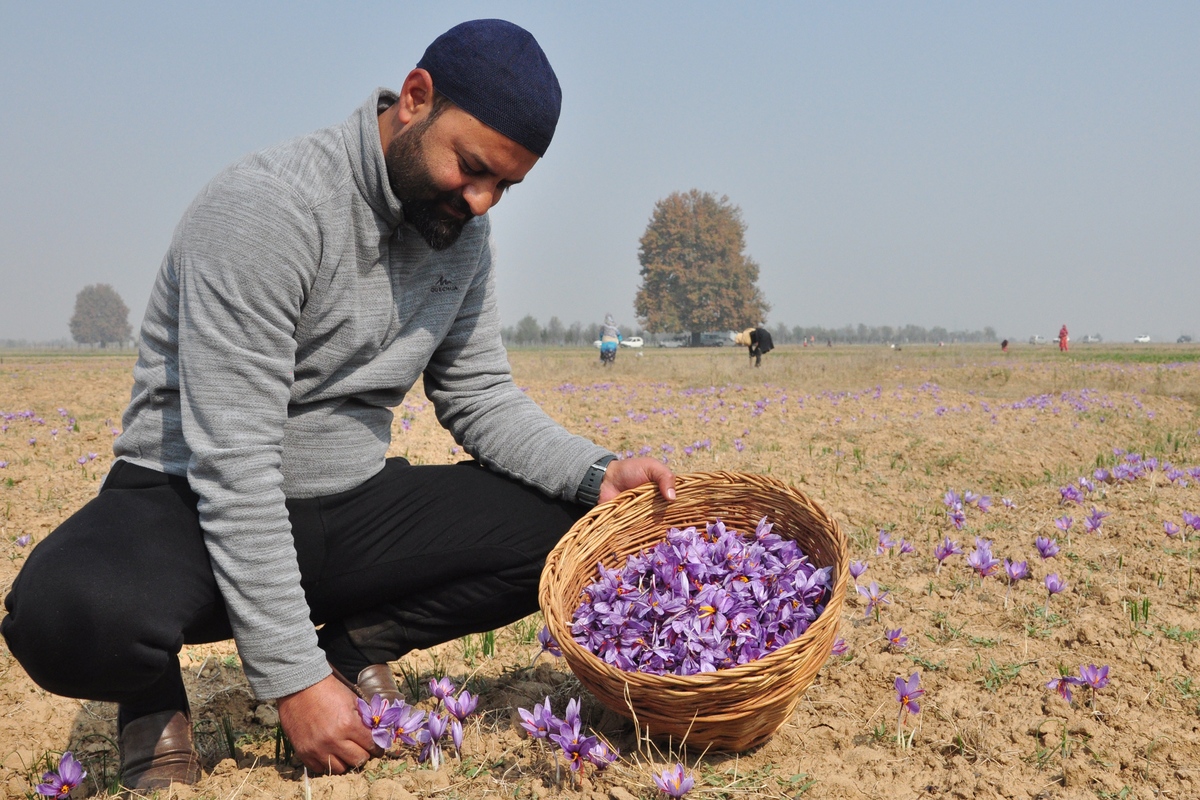Saffron is the colour of the country: MP CM
“We are opposed to the Congress’ opposition to saffron and we strongly criticize such attitude of the Congress,” Dr Yadav averred, while addressing media persons at Bhopal.
GI tagging of saffron has increased its value and significance, opening up new vistas for its trade at international at level.

SNS Photo: Mohammad Amin War
Kashmir Saffron: Saffron farmers, Aijaz Mohiuddin and Syed Farooq Ahmad in the Pampore area of south Kashmir were in jovial mood on Sunday as they are having a bumper crop during the ongoing picking of saffron flowers. The two growers said that after several years they had increased production because of good rainfall. Hundreds of small and big farmers and their families are currently engaged in picking the saffron flowers because the weather department has forecast another bout of rain that could damage their produce.
Growers of the ‘Red Gold’, as they call their Saffron produce, are annoyed over the “failure” of the Rs.400 crore National Saffron Mission (NSM) that was launched by the centre in 2010 to boost saffron cultivation. The irrigation system that was proposed under the project has not come up so far in most saffron growing areas as a result of which they depend on rain. The NSM was extended twice by the central government but the desired results have not been achieved because of its partial implementation, said the farmers.
Farooq Ahmad said that in the past 10 years, his saffron cultivation area has squeezed to 1.25 acres from the earlier 3.75 acres because of less rains and failure of the NSM to properly implement the irrigation component. Mohiuddin of the Chanara village in Pampore said that production of saffron has reduced almost by half on his 0.875 acre land holding in the past ten years. However, he was happy that he has so far picked more than 1 kg Saffron flowers.
Advertisement
Many farmers have reverted to the traditional system of cultivation as the NSM has not benefitted them, they said. What was worrying the farmers was that instead of rejuvenating saffron cultivation in Kashmir, the total area under the cultivation had declined to about 3700 hectares from the 5700 hectares in 1996. A little above 16,000 families are engaged in Saffron cultivation in the valley compared to 19,000 a few years ago. About 7000 families in a couple of villages in 2012 offered their lands for rejuvenation of saffron under the NSM.
Additional Chief Secretary (ACS), Agriculture Production Department, Atal Dulloo, recently visited saffron areas of Pampore to review the status of flower picking operations going on in the fields. Director Agriculture, Kashmir, Chowdhary Mohammad Iqbal besides Administrator India International Kashmir Saffron Trade Centre (IIKSTC), Shahnawaz Ahmad Shah, Agriculture Information Officer, Sheikh Imran, member Kisan Board, Irshad Ahmad and other senior officers accompanied the ACS.
Dulloo visited saffron fields and inspected the saffron flower picking operations. He reviewed status of various interventions being made by the department besides assessing latest technologies adopted by the saffron growers. Saffron is a legendary crop of Kashmir. “It is an important cash crop and the department is enduring to boost this harvest to its full potential”, he added.
Dulloo said that adoption of latest technologies by the Saffron farmers will not only increase the production but will ensure better quality to the consumers as well. GI tagging of saffron has increased its value and significance, opening up new vistas for its trade at international at level. Dulloo said the quality of Kashmir saffron is much better than that from other countries like Spain and Iran.
Advertisement